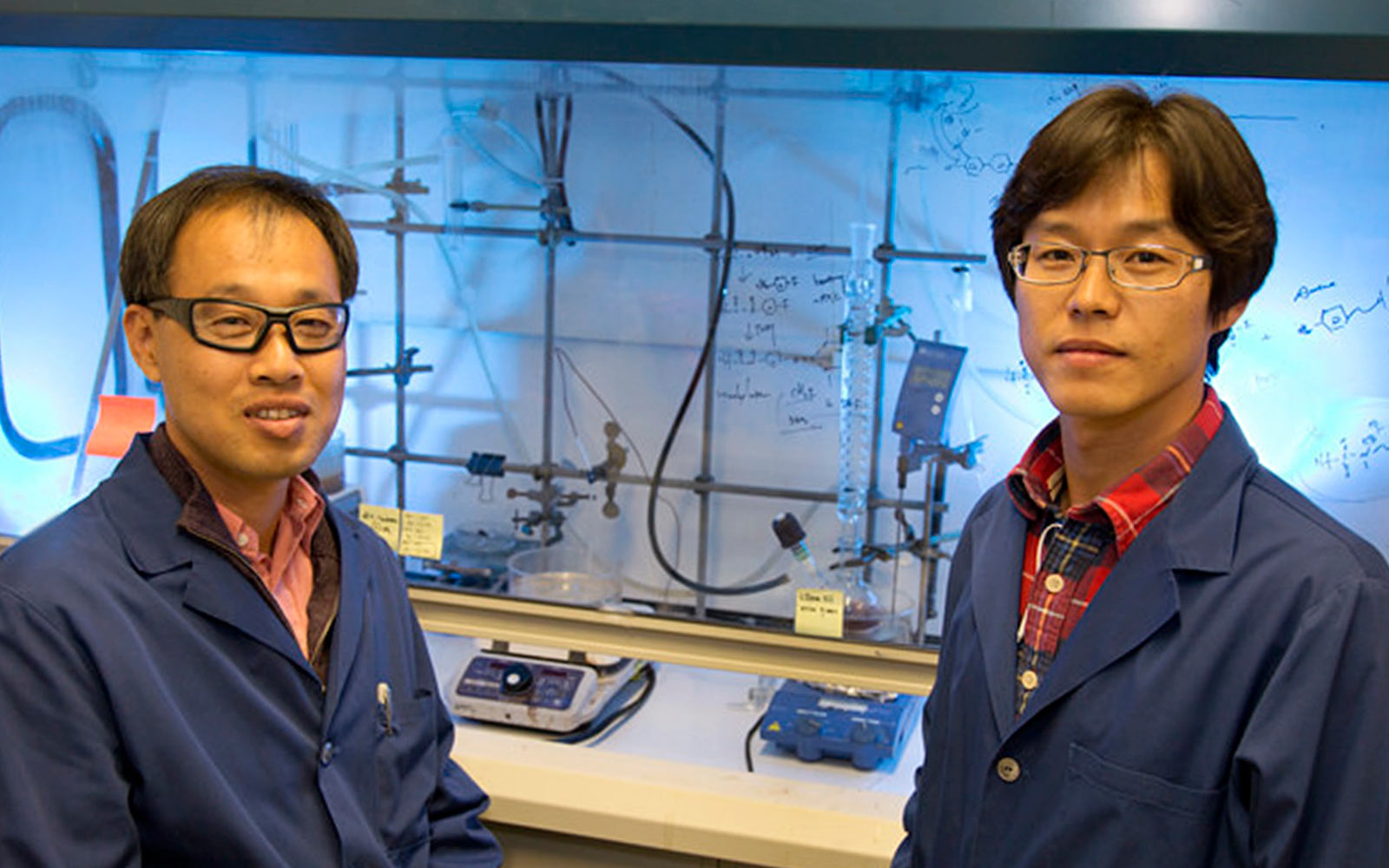New class of fuel cells offer increased flexibility, lower cost
Wider temperature tolerance is based on ion-pair-coordinated polymers
A new class of fuel cells based on a newly discovered polymer-based material could bridge the gap between the operating temperature ranges of two existing types of polymer fuel cells, a breakthrough with the potential to accelerate the commercialization of low-cost fuel cells for automotive and stationary applications.
“Polymer-based fuel cells are regarded as the key technology of the future for both vehicle and stationary energy systems.” — Yu Seung Kim
A Los Alamos National Laboratory team, in collaboration with Yoong-Kee Choe at the National Institute of Advanced Industrial Science and Technology in Japan and Cy Fujimoto of Sandia National Laboratories, has discovered that fuel cells made from phosphate-quaternary ammonium ion-pair can be operated between 80°C and 200°C with and without water, enhancing the fuel cells usability in a range of conditions. The research is published in the journal Nature Energy.
“Polymer-based fuel cells are regarded as the key technology of the future for both vehicle and stationary energy systems,” said Yu Seung Kim, the project leader at Los Alamos. “There’s a huge benefit to running fuel cells at the widest possible operating temperature with water tolerance. But current fuel-cell vehicles need humidified inlet streams and large radiators to dissipate waste heat, which can increase the fuel-cell system cost substantially, so people have looked for materials that can conduct protons under flexible operating conditions. It is very exciting that we have now found such materials.”
Click here for the full story.
